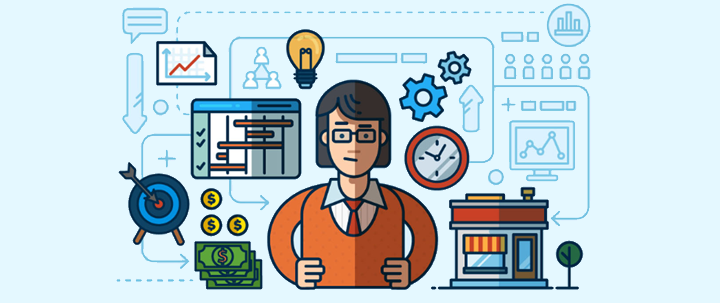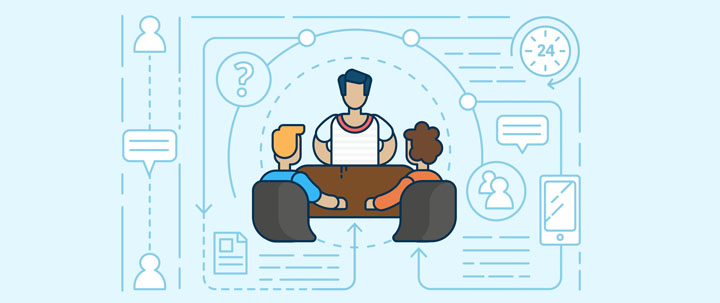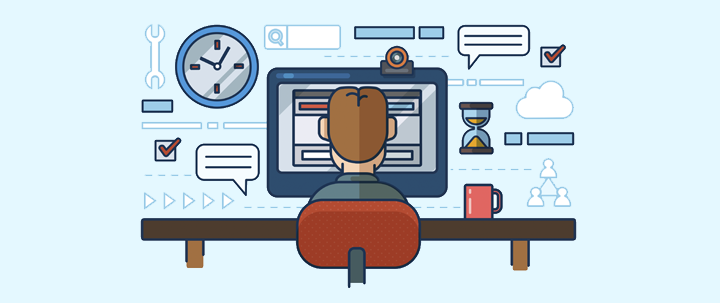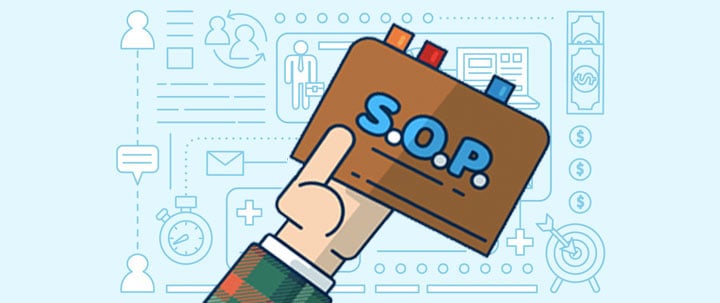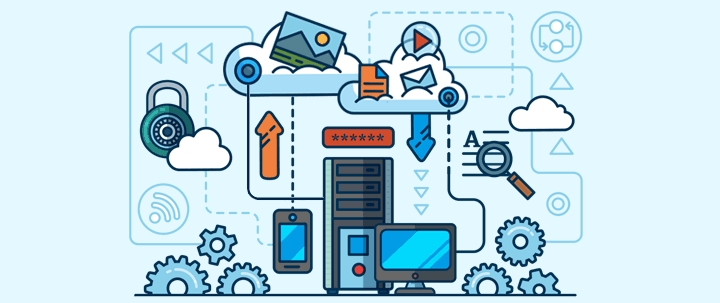Just like every area of business, IT helpdesks are subject to change. This change comes in the form of a digital transformation. This transformation has affected all areas of business, as organizations move away from legacy software and over to cloud-based applications.
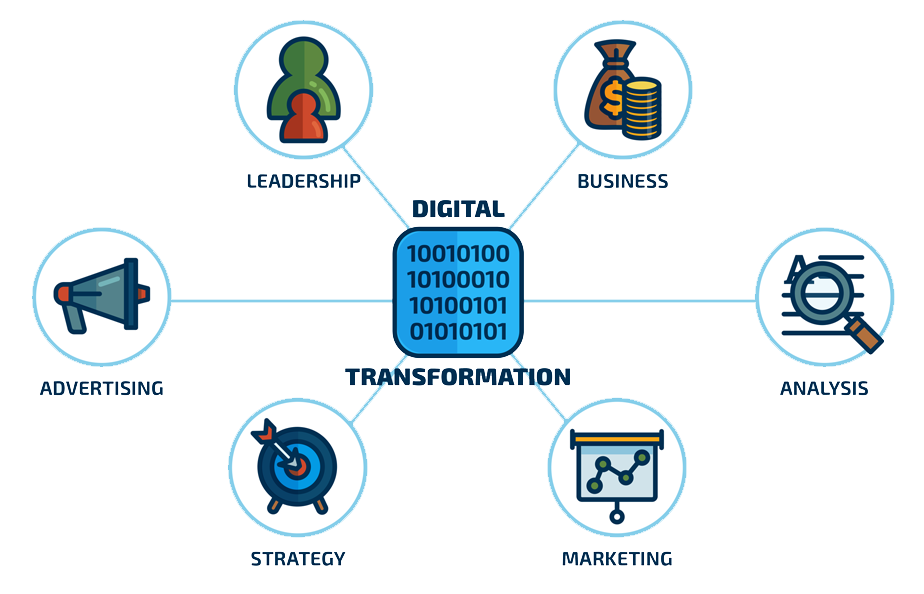
Source: https://chatbotsmagazine.com/the-3-evolutions-of-bots-for-it-service-desk-automation-5b72babeea64
One of the main pressures for change comes from digital consumers. Modern consumers simply expect more, especially when it comes to the level of service they expect from IT helpdesks. By assessing your own IT helpdesk capabilities, you’re able to improve your customer-centric engagement as well as your employee-engagement and scale your business rapidly at a lower cost.
But preparing yourself for the digital transformation is not easy. The digital transformation is a concept where you embed modern technology within your business. It doesn’t just act as an add-on, it’s integral to your success.
Digital transformation done right will enable your team to interact with data and technology to discover insights about your employees, customers and other stakeholders in order to improve the ways you make informed decisions.
In this post, we'll explore:
1. Why IT helpdesks need to think digital
2. Why Digital transformation doesn’t just affect customers
3. How to assess how you operate in order to drive change
4. Why automation will be crucial in the coming years
5. How to support your support staff during these changes
Ready? Let’s go!
Why IT Helpdesks Need to Start Thinking “Digital”
Digital consumer’s expectations have changed. The ways in which they’d like to receive IT support differ from person to person and company to company. Because of this, you need to look at your own service desk offerings to understand:
1. What you currently do now (your processes etc.)
2. What your employees and customer’s expectations are
When you’ve identified those, you’ll quickly see gaps between what you currently offer and what people expect. This gap is where you implement the digital transformation.
You can start by talking with your employees to find out how they use your IT support services. Are there specific channels they’d prefer to use? Are there common cases that crop up time and time again? Do your people consistently use voice search or smart-home technologies?
It’s important to collect as much data and information as possible as it’ll be the grounding work for your future transformation. From there, you want to look at how your IT helpdesk actually responds to individual requests and tickets.
Here, you should be looking to learn more about how your support team and current technologies actually interact with the people they’re trying to help. You should have a clear idea of what works and what doesn’t - and you can use these ideas to better understand the experience gap you’re trying to fill.
Digital Transformation isn’t Just for Customers
Your employees, your people, are the lifeline of your organization. Thinking about the digital transformation without considering your employees will lead to errors. In reality, your employees act as customers too. So whether your customers are internal (employees) or external (consumers), you need to think about all their needs when it comes to your IT helpdesk.
If you’ve already begun implementing SOPs, look further at those to see how your service is offered right now. Then think about the gap you’ve established to see what changes need to be made so that the service you offer aligns better with the service expected by your customers.
In order to do this though, you need to make sure your whole team have the resources they need. When your IT service management (ITSM) teams are able to bring their own skills to the digital era, you’ll see impressive company-wide results.
When you’ve collected data, you’ll need to make this accessible to your entire team, especially IT. Your IT department needs this data in order to extract key information and insights about what your specific business needs to make the digital transformation smoother and more efficient.
How Do You Operate
Asking your customers about their expectations is the easy part. You simply ask (non-leading) questions to collect qualitative and quantitative data to support your arguments. The harder step is to look at how your IT helpdesk actually engages with customers - considering many instances will be customer-specific.
The digital transformation is not only for optimizing and streamlining your processes but about building a system whereby every department in your organization aligns with your business goals and helps support and grow your company. From looking at your current process, think about whether your IT helpdesk supports your business goals.
If you’re aiming to cut down the cost of IT support on an annual basis, you’ll want to look at ways you can improve your self-help systems. Personas are not just for marketing. Your helpdesk needs to understand the personas and characteristics of each customer they have. Their responses, then, should adapt and reflect these individual behaviors.
With all this information, you can build a system that helps align your people, your technology and your data. The issue many organizations have is that assets (people, technology, data) need to interact seamlessly together and in many cases, they don’t. When you get it to work right, the IT helpdesk becomes more than just a place where employees go to fix their hardware and where customers go to solve their issues. It becomes a hub of growth for your operation and digital customer experience.
Automation
For some, the rise in automation is a huge fear: What if robots take away my job? In reality, though, it’s simply not the case.
The rise in automation technology is here to help augment the skills of your top workers, not steal them. You can automate internal processes or external responses. What you choose to do will depend on your business goals. By automating repetitive, time-consuming tasks, you free up time for your IT service team to work on the tasks that matter, that have intrinsic business value.
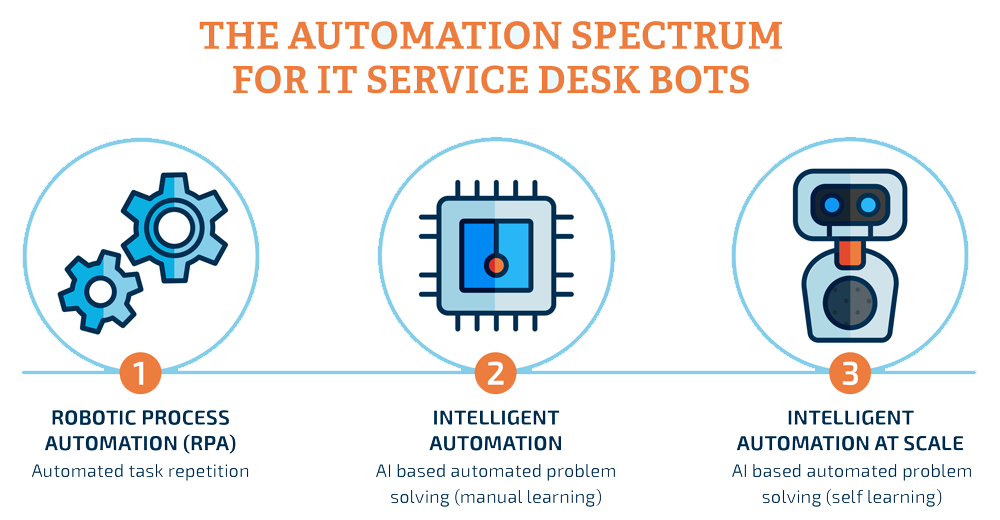
Source: https://chatbotsmagazine.com/the-3-evolutions-of-bots-for-it-service-desk-automation-5b72babeea64
Part of the digital transformation will involve automating parts of your processes. It goes without saying, you can’t dive straight in and automate everything. You need to think carefully about which processes to automate and why.
Consider the customer journey first. Where in that journey could you automate processes? To help you identify these sections, think about whether the customer in question would feel supported by automated processes. You want to ensure there is still a human element to your support system. Automation technologies are clever and smart, but they don’t replace real authentic communication.
Adaption for IT Helpdesk Personnel
Despite arming your company with new technology to enter the digital world, you also need to arm your team too. When you automate certain processes you give freedom to your ITSM team to focus on important business-value tasks.
However, this comes with a caveat. Your team now has increased expectations in the level of support and service they provide. Because of this, you need to make sure your entire team is equipped with the resources and knowledge to handle the influx of complicated (and often technical requests).
We’ve already mentioned that your technology needs to adapt and reflect the data you’ve collected from your customers, but so does your support team. There will be instances where technology is unable to assist with issues or queries and it’s up to your support team to resolve these problems with the least amount of friction.
Final Thoughts
When it comes to service, consumers rule. They get to decide the rules of engagement. Because of this, forward-thinking companies welcome the digital transformation as it gives them the ability to tailor their approach for their own customer base.
If you want to create a competitive advantage within your IT helpdesk, your organization needs to start thinking digital. In this post, we’ve outlined some of the ways you can make your digital transformation a success.
What’s more, when you go digital, you’ll have access to a wealth of data about your customers' pain points, challenges, and concerns that you can use to support them in other areas of your business.

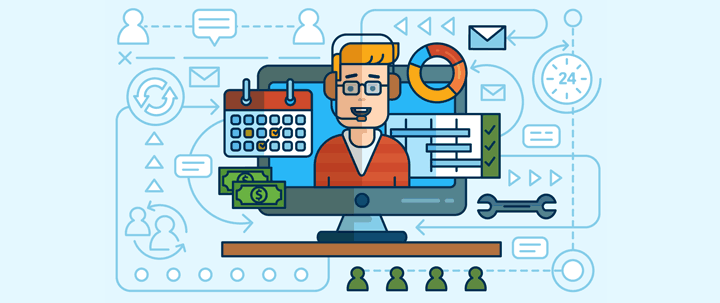

%201.png?width=559&height=559&name=close-up-women-working-with-devices%20(1)%201.png)
